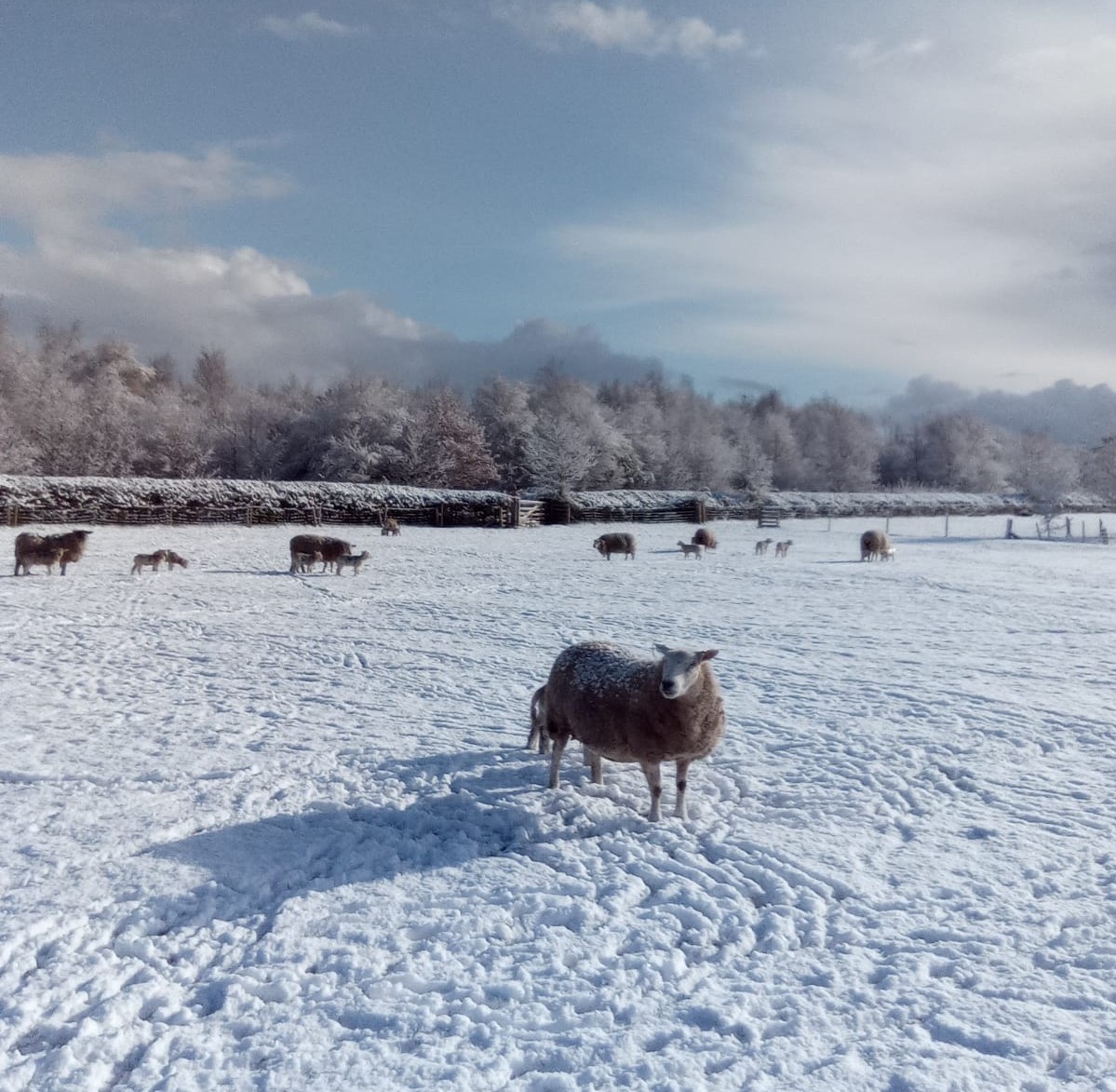Managing sheep in cold weather
Friday, 10 March 2023
While we more commonly associate March with the beginning of Spring, the snow and extreme cold temperatures we are experiencing across much of the UK puts ewes and young lambs at high risk of hypothermia. AHDB’s Senior Animal Health & Welfare scientist Dr Lis King shares advice on how best to help your animals survive the harsh weather.
Sheep are generally good at coping with extreme weather conditions, but the challenge is intensified when the cold temperatures are matched with snow fall and high winds or extreme weather is prolonged.
Maintenance requirements increase during cold weather, with sheep using a higher proportion of their energy to keep warm. Having access to good shelter and sufficient feed with additional forage will help ewes with young lambs to protect themselves against the weather and reduce potential impact on growth rates. If lactating animals have a nutritional deficit, then milk yield will suffer, which will have a detrimental effect on lambs.
It may be necessary to make supplementary forage available to boost energy reserves and make sure they are getting adequate levels of nutrition. Bales can also be used to offer shelter to your sheep.
Sheep will naturally move in the direction of the wind until they are stopped by a barrier. When wet and cold they may be reluctant to move and this behaviour may result in them becoming buried in snow drifts.
Hypothermia can set in quickly during these cold wet conditions, making lambs and shorn or low body condition ewes particularly vulnerable. Prioritise shelter for the most vulnerable. A lamb with hypothermia will appear weak, gaunt, or hunched up and have a cold mouth and ears. Use a rectal thermometer to check its temperature. To warm them up, you can feed warmed up colostrum or a milk replacement, place them in a warming box or use heat lamps if you are in the position to do so.
If you’re in the middle of lambing indoors, try to make more available space to set up lambing pens to allow them to be housed longer. Check for drafty areas and stack bales or staple feed bags to boarding to help reduce drafts.
Those lambing outdoors, more frequent checks may be necessary where possible. If animals have to be turned out, do it early in the day so they have time to adapt and find adequate shelter. Be extra vigilant for mastitis. Cold winds can trigger chaffing of teats and lead to mastitis. If you have concerns on the welfare of any of your animals, please consult your vet.
Water supplies are extremely important, so do extra checks to ensure water troughs are not frozen and try to ensure you have an alternative source or a method of obtaining water should pipes freeze or burst.
Don’t forget to check any medicines and vaccines are stored at the correct temperature and are not allowed to freeze. Some farm equipment such as pressure washers can be rendered totally unusable by sub-zero temperatures so ensure they are protected too.
And of course, the freezing conditions also cause hazardous conditions for farm workers, so take extra care when moving around the farm and make sure staff have somewhere warm and dry to recuperate throughout the day.
Additional resources
Managing cattle and sheep during extreme weather events: https://ahdb.org.uk/knowledge-library/managing-cattle-and-sheep-during-extreme-weather-events
Managing calves in cold weather: https://ahdb.org.uk/knowledge-library/calves-in-cold-weather
Colostrum management: https://ahdb.org.uk/knowledge-library/colostrum-is-gold-feeding-colostrum-to-calves-lambs-and-piglets
Long term planning for extreme weather webinar: https://ahdb.org.uk/long-term-planning-for-extreme-weather-beef-sheep-and-dairy
Make straw go further this winter https://ahdb.org.uk/knowledge-library/make-straw-go-further-this-winter
Forage Aid: https://forageaid.org.uk/
Alternative winter systems to housing cattle and sheep: https://ahdb.org.uk/knowledge-library/alternative-winter-systems-housing-cattle-sheep


